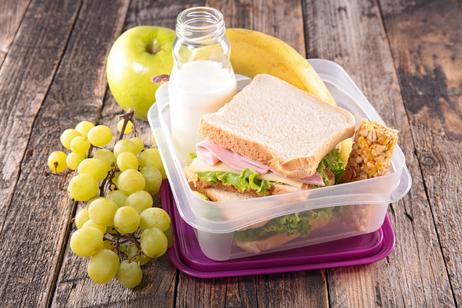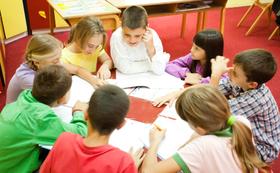As an adult, you’ve well learned that while societal pressures still exist, it is, in fact, possible to say no to peer pressure. As a child in school, however, it feels like being liked and accepted is the most important thing in the world. No child wants to stand out too much, especially for the wrong reasons.Canon-McMillan School District
Unfortunately, underprivileged students are forced to fight this battle in a number of ways. From wearing hand-me-down clothing and sharing schoolbooks to enrolling in free lunch programs, it’s difficult not to stand out when you don’t come from the same economic background as more privileged students. In some schools, the differences are minimal and barely noticeable but children in many schools are experiencing something called lunch shaming and it may affect their education.
In this article, we’ll explore the subject of lunch shaming to discover what it is and how it affects public school students. We’ll also take a closer look at the incentives behind lunch shaming and what some people are doing to prevent it.
This video from PBS reports on the issue of lunch shaming.
What is Lunch Shaming, Anyway?
According to Feeding America, 16 million American children struggle with hunger each year. It may not be a daily battle, but at some point throughout the course of the year, these children lack the means to obtain nutritious food on a regular basis. Outside of this poll, American teachers notice that many of their students aren’t able to access adequate amounts of food and it affects their ability to learn.
There are programs out there designed to help children gain more reliable access to food at home, but the most well-known programs are those that provide free or discounted meals at school. No Kid Hungry has been working to end childhood hunger by instituting school breakfast programs. Rather than serving breakfast before the bell, these breakfast programs have become a regular part of the school day and it has lead to an increase of 3 million additional kids eating a healthy breakfast each day.
But what about school lunch programs? They certainly exist, but they don’t always work in the way they are intended to. In some cases, the children to utilize these programs are stigmatized and bullied, and it isn’t always other children who are doing the bullying.
Few cafeteria workers will turn away a hungry child who isn’t able to pay, but some schools keep track of unpaid debts a little more than they should. They send children home with “I owe lunch money” stamped on their hands or give children you can’t pay a barely passable meal in place of the meal given to paying students. It even extends to the high school level with some senior students being denied their caps and gowns unless they pay their meal debts.
What Are the Incentives Behind Lunch Shaming?
More and more, schools are being run like businesses. Over the years, this philosophy has seeped its way into many different aspects of the public education system and even the lunchroom hasn’t escaped. Lunch shaming is done to overtly identify and stigmatize children who don’t have the money to buy a school meal. There are a number of ways in which lunch shaming manifests.
Here are some of the things schools have done to students unable to pay:
- Depriving them of hot meals, sometimes substituting a cold meal
- Disposing of perfectly good food instead of giving it to students in need
- Giving indebted students visibly inferior meals
- Requiring students to work off their lunch debt with cafeteria labor
- Branding students with stickers or stamps to shame them
The USDA applies this treatment to students who are eligible for free or reduced-price lunches but, in practice, it is also executed against students who have exceeded the thresholds of their free or reduced lunch eligibility. The hope is that by embarrassing the student and parents, the lunch debt will be paid more quickly. Of course, that’s not always what ends up happening.
Though these policies exist in schools around the nation, there are many working to change those policies. There are also plenty of workers in the schools who enforce these policies who have begun to take a stand against them.
An example comes from the Canon-McMillan School District in Eighty-Four, Pennsylvania. In 2016, the district adopted a policy requiring cafeteria workers to throw away hot lunches rather than serve them to students who were behind on payments. Rather than execute this policy, cafeteria worker Stacy Koltiska tendered her resignation, citing ethical compunction as the reason.
Unfortunately, the Canon-McMillan school board was unmoved by Koltiska’s actions and instead viewed it as proof that the measure was working. In an interview with the Washington Post, School board member Joe Zupancic explained that the policy was not adopted with the intention of shaming or embarrassing children. He claims that it was made as a result of having 300 families owing to the district between $60,000 and $100,000 each year. After instituting the policy, those numbers dropped to 70 families and a total of $20,000.
This video reports on how schools handle lunch shaming.
What Some People Are Doing to Prevent It
Every now and again, a story hits the news of a child being denied a hot lunch or being forced to throw away a perfectly good meal because they couldn’t pay. This issue is clearly more prevalent than many Americans realize, as there are a number of examples of individuals and organizations stepping in to resolve unpaid debts in the hopes of eliminating lunch shaming.
One example comes from Warwick Schools in Rhode Island who announced in May of 2019 that they would be serving children with delinquent lunch tabs cold sun butter and jelly sandwiches (with fruit, veggies, and milk) instead of the hot menu item served to other children. The announcement sparked such a fierce backlash that the public raised of $75,000 in a single week to resolve all of the lunch debt Warwick schools had accrued. Two GoFundMe campaigns and sponsorship by Chobani Yogurt CEO Hamdi Ulukaya have raised more than $150,000 to date for this purpose.
A more striking example comes from West Park Elementary where a 9-year-old boy named Ryan Kyote used his allowance – a total of less than $75 – to pay off the lunch debt for his entire third-grade class.
When Gov. Gavin Newsom caught wind of the story, he started working on a new bill with the hopes of ending lunch shaming. This new legislation was signed into law and bans the process in which schools deny students a meal of their choice due to unpaid lunch fees. The law amends the existing 2017 Child Hunger Prevention and Fair Treatment Act by requiring that schools invalidate any policies that ask officials to serve alternative meals to students with unpaid fees.
This video looks at the serious issue of hunger in our schools.
The Real Problem: Hunger
Many of the school districts that adopt lunch shaming policies reportedly do so in an effort to collect debts. They often claim that these uncollected debts prevent the school from putting money toward other programs and services that benefit students, neglecting to mention the negative impact the policies themselves have on those same students. In discussing lunch shaming, it is important to step back from the bureaucracy and focus on the real problem: modern hunger.
In some school districts, uncollected debt exceeds the $4 million mark which is no small amount. The fact that many of these debts remain unchanged from year to year suggests that lunch shaming policies don’t work, and schools need to take a different approach.
That’s exactly what happened in New Mexico in 2017. In April of 2017, Governor Susana Martinez signed the Hunger-Free Students’ Bill of Rights into state law. This bill, “directs schools to work with parents to pay their debts or sign up for federal meal assistance.” It also puts an end to practices meant to shame or embarrass students and applies to all public, private, and religious schools that receive federal subsidies for student meals.
Change must come from the top and, unfortunately, that change doesn’t always come easily or quickly. Lunch shaming continues to be an issue in schools across the nation and the bigger issue behind it, child hunger, will be even more difficult to resolve.
No child should go hungry, whether it’s a single missed meal or a long-term issue. Proper nutrition is essential for growth and development, not to mention the fact that children can’t learn when they are hungry. If you’re passionate about ending child hunger and lunch shaming, contact local agencies to see how you can volunteer your time toward this issue.
Questions? Contact us on Facebook. @publicschoolreview















